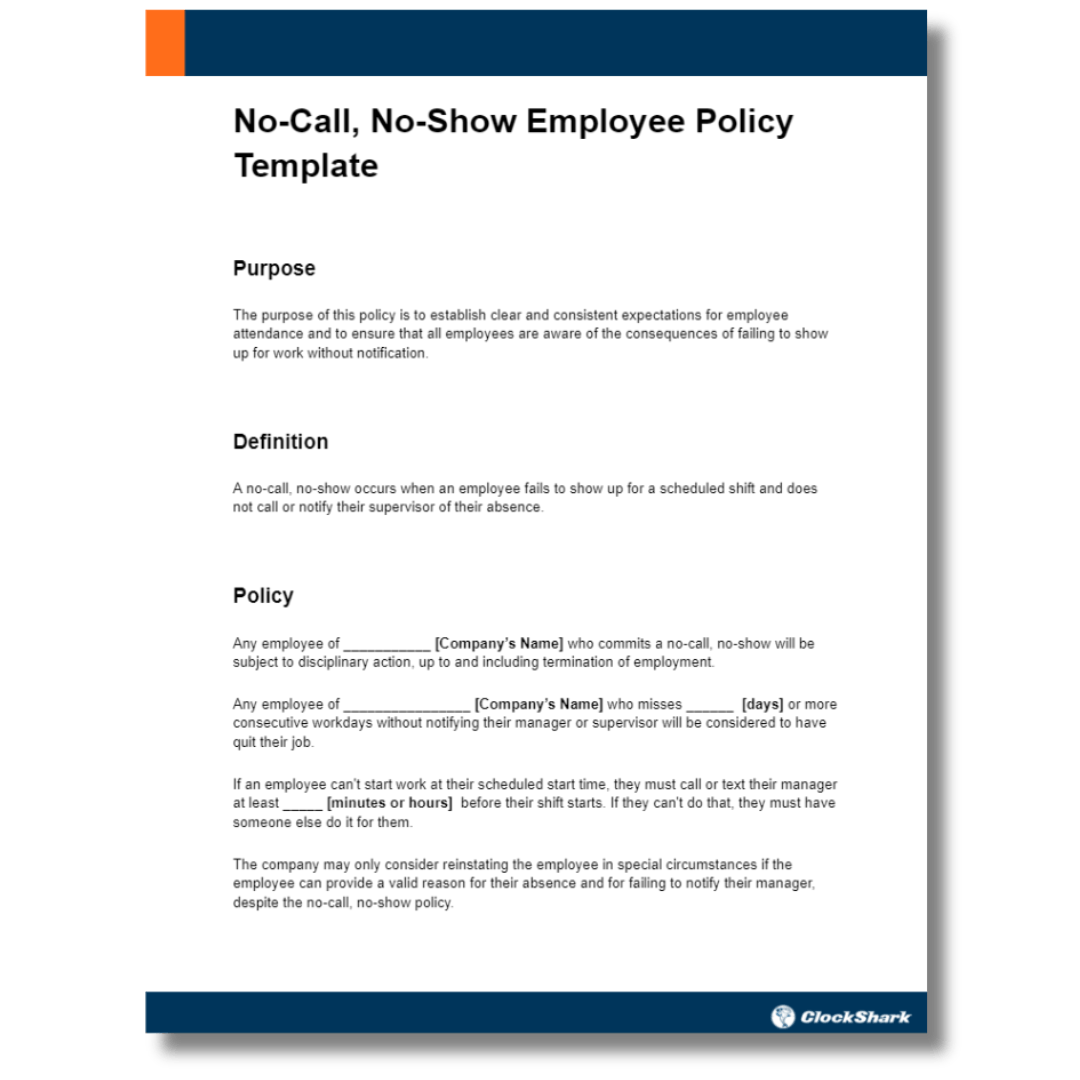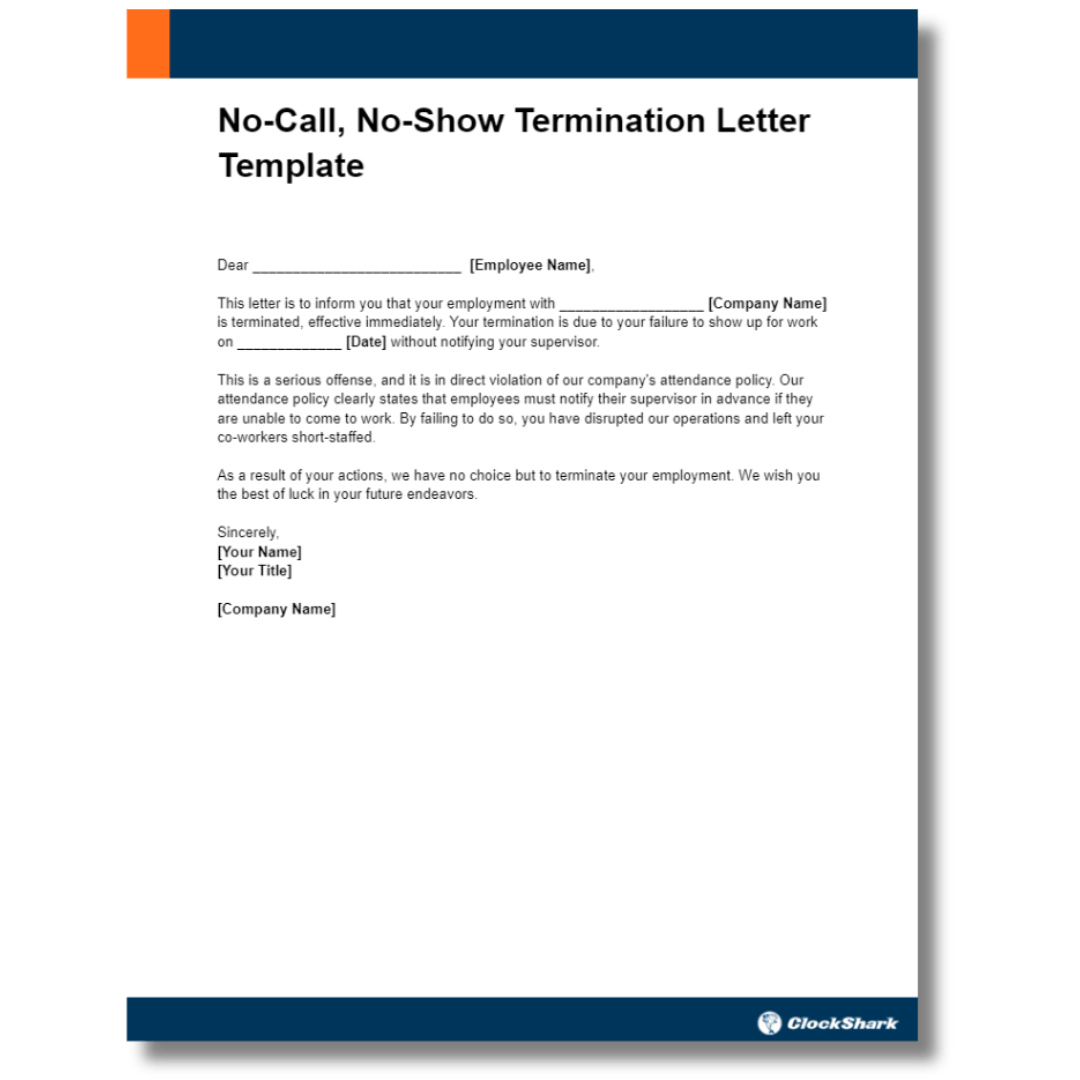No-call, no-shows can be a major headache for employers. When an employee fails to show up for work without notifying their employer in advance, it can disrupt operations and leave other employees scrambling to cover the missing shift.
There are a variety of reasons why employees may not show up for work, but it's important to address the issue promptly and professionally. If you're not sure how to handle a no-call, no-show, or job abandonment, or if you're looking for tips on how to prevent them from happening in the first place, this blog post is for you.
What is a no-call, no-show (NCNS) employee?
A no-call, no-show is when an employee fails to report to work for their scheduled shift without notifying their employer in advance. Regardless of the reason, no-call, no-shows can be a serious problem for employers. They can leave other employees short-staffed, which can lead to decreased productivity and increased stress.
Of course, accidents happen, and an employee's absence could be due to something beyond their control, but ideally, your workers should provide you with ample notification of their need to take time off or come in late.
What is job abandonment?
Job abandonment is when an employee stops coming to work without notice or intention of returning. It may be considered a voluntary resignation, which means that the employee may not be eligible for unemployment benefits.
What happens when an employee does not show up for work?
When an employee doesn’t show up to work, it can be a serious blow to your company. An unplanned absence of a worker can set your whole company back because you have to scramble to fill their position since you weren’t prepared for their absence.
Disruption of workflows
One of the immediate consequences when an employee fails to show up for work is the disruption of daily workflows. This disruption can ripple throughout the organization, affecting productivity and potentially causing delays in projects or services. Other employees may have to pick up the slack, which can lead to stress and burnout.
Impact on team morale
Consistent no-call, no-show can also have a negative impact on team morale. Colleagues who are left to cover for the absent employee may feel resentful or overburdened, leading to a less harmonious work environment. Team cohesion and morale can suffer as a result.
Loss of productivity
When an employee is absent, the work they were responsible for often goes unfinished or is delayed. This loss of productivity can have financial implications for the company, especially in industries where time-sensitive tasks are crucial. It can also result in missed deadlines, unhappy clients, or a backlog of work that needs to be addressed.
Why should a company have a no-call, no-show policy?
If you don’t have guidelines in place to ensure your employees understand your attendance policy, they won’t have as much regard for showing up to work, and you won’t have much to fall back on in the way of discipline.
There are a number of reasons why a company should have a policy for no-call, no-show:
- To protect the company's bottom line: No-call, no-shows can be costly for employers. They can lead to decreased productivity, increased stress on other employees, and increased overtime costs.
- To ensure that all employees are treated fairly and consistently: A no-call, no-show policy should be applied consistently to all employees, regardless of their position or seniority. This helps to create a fair and equitable work environment.
- To set clear expectations for employees: It should clearly state the consequences for employees who fail to show up for work without notifying their employer in advance. This helps to ensure that employees are aware of the company's expectations and that they are held accountable for their actions.
- To reduce employee turnover: A no-call, no-show policy can help to reduce employee turnover by sending a message to employees that the company takes attendance seriously. When employees know that they will be held accountable for no-call, or no-shows, they are more likely to be reliable and show up for work on time.
- To protect the company from legal liability: It can help to protect the company from legal liability by providing documentation of the employee's absence and the company's attempts to contact the employee. This documentation can be helpful in the event that the employee files a lawsuit against the company.
In addition to these reasons, a no-call, no-show policy can also help to create a more positive work environment for all employees. When employees know that they can rely on their colleagues to show up for work on time, they are more likely to be productive and engaged.
Effective strategies to deal with employee no-call, no-show
Dealing with employee no-call, no-show situations can be challenging, but it's essential to address them promptly and effectively to maintain productivity and a positive work environment. Here are some strategies to help you handle these situations:
1. Establish clear attendance policies
Start by having well-defined attendance policies in place.
Having a steady set of rules for work attendance will give you some controllability over what is to happen to employees who fail to show up to work without informing you. An attendance policy establishes rules for what employees are expected to do when it comes to their attendance, and will also explain the amount and types of leave allowed within your organization.
Your attendance policy should include definitions of terms and expectations in the event of absences or tardiness. Those would include:
- Absence
- Unscheduled absence
- Tardiness
- No call/No-show
- Sick-leave
- Paid time off (PTO) requests
2. Create a no-call, no-show policy
A no-call, no-show policy should be included with your attendance policy.
Once you have clearly defined what no-call, no-show means to your company, present the consequences if it were to happen. These consequences depend on whether or not the employee comes back for work.
3. Open communication channels
Encourage open communication between employees and supervisors. Make it easy for employees to report absences by providing multiple contact methods (phone, email, text), and ensure they know whom to contact.
4. Document everything
Maintain thorough records of employee attendance, including absences, tardiness, and any communication regarding time off. Having a clear paper trail can be valuable if you need to take disciplinary action.
5. Investigate the reason for the no-call, no-show
If the employee has a valid reason, such as illness or family emergency, the you may be able to excuse the absence. However, if the employee simply quits without notice or intention of returning, you may need to take disciplinary action.
6. Take disciplinary action if necessary
The type of disciplinary action that you take will depend on the circumstances of the no-call, no-show. For a first offense, you may choose to give the employee a verbal warning. For repeat offenses, you may choose to give the employee a written warning, suspension, or termination of employment.
Here are some additional tips for dealing with employee no-call, no-show:
- Try to contact the employee as soon as possible: This will help you to determine where your team is and their intentions. If you are unable to contact the employee, document your attempts to do so.
- Document the incident: This will include the date of the no-call, no-show, any attempts to contact the employee, and any other relevant information.
- Be fair and consistent when taking disciplinary action: Consider the employee's past work record and the circumstances of the no-call, no-show when deciding on the appropriate disciplinary action.
- Be understanding of extenuating circumstances: If the employee has a valid reason for the no-call, no-show, such as illness or family emergency, consider excusing the absence.
- Use the no-call, no-show incident as an opportunity to talk to the employee about their concerns: This will help you to understand the reasons behind the no-call, no-show and to take steps to prevent it from happening again.
Proven methods to avoid employee no-call, no-shows and prevent job abandonment
When employees fail to show up to work when they’re supposed to, it causes a lot of problems in the workplace. From lower morale and less productivity to the costs associated with unscheduled absences, employers need to ensure no-call, no-show employees are appropriately disciplined.
One of the most important things that employers can do is to create a positive work environment where employees feel valued and respected. When employees feel good about their jobs and their employers, they are more likely to be reliable and show up for work on time.
With a time off app, you can transform the way you handle employee absences and ensure that everyone is on the same page when it comes to attendance policies. Say goodbye to the headache of managing no-call, no-show situations and hello to a more streamlined, efficient, and productive workplace. Try ClockShark free for 14 days.
Save Time and Money with ClockShark
FAQs about no-call, no-show
Is no-call, no-show the same as regular employee absenteeism?
While they may seem to be the same thing, they are different. Employee absenteeism refers to an employee who consistently does not show up when they are supposed to. No-call, no-show employees may do so only once due to an unforeseen circumstance rather than job abandonment.
Understanding termination policies: Should I fire an employee for one no-call, no-show?
Most companies will have a policy in place to explain what happens in the event of a no-call, no-show employee but, unless it is a common occurrence, usually one incident is disciplined with a verbal warning.











